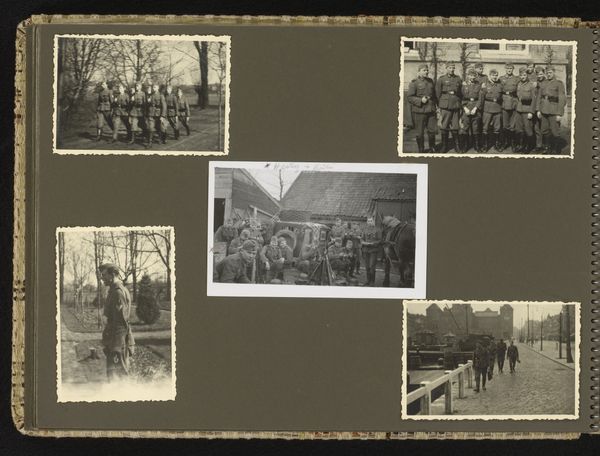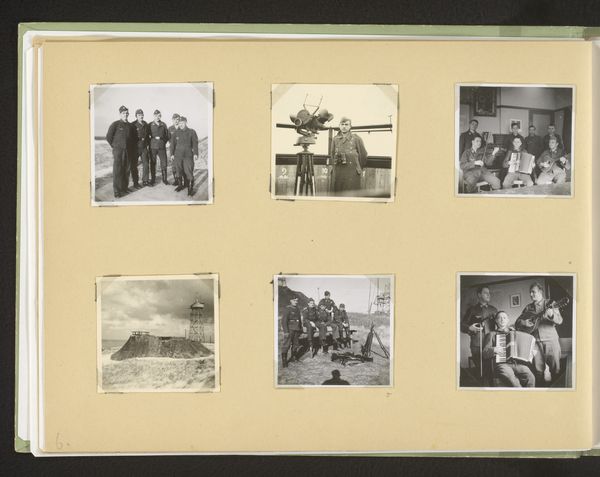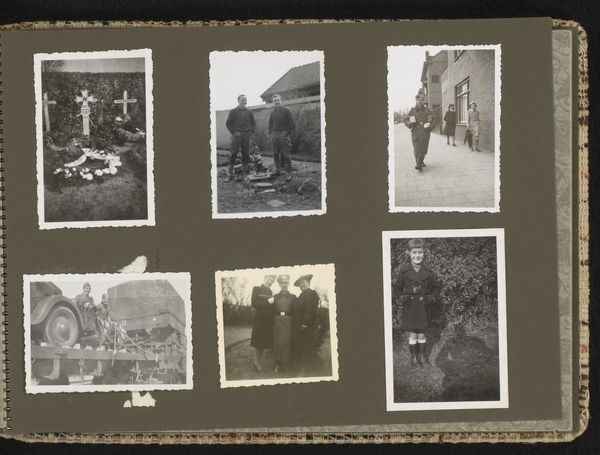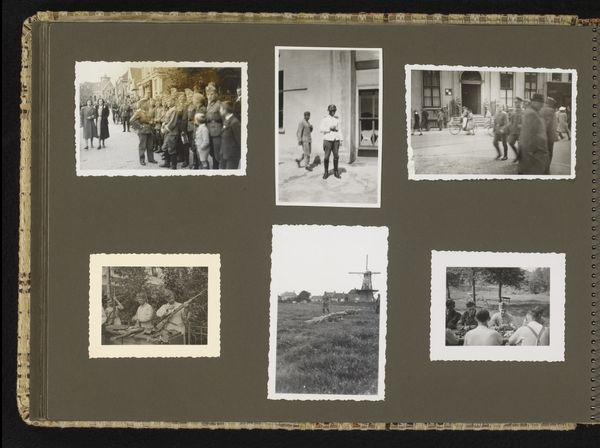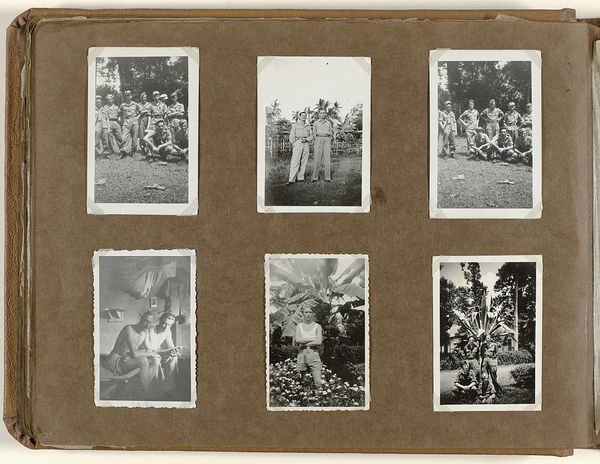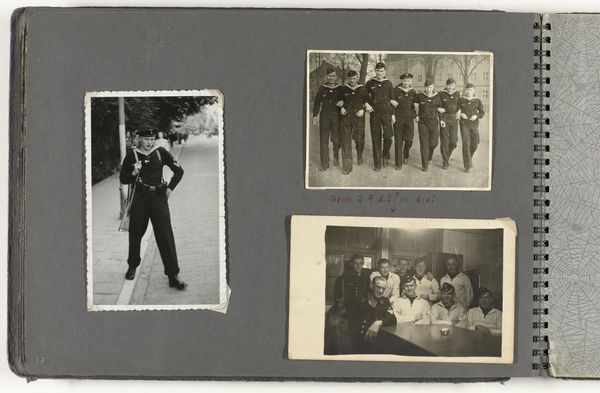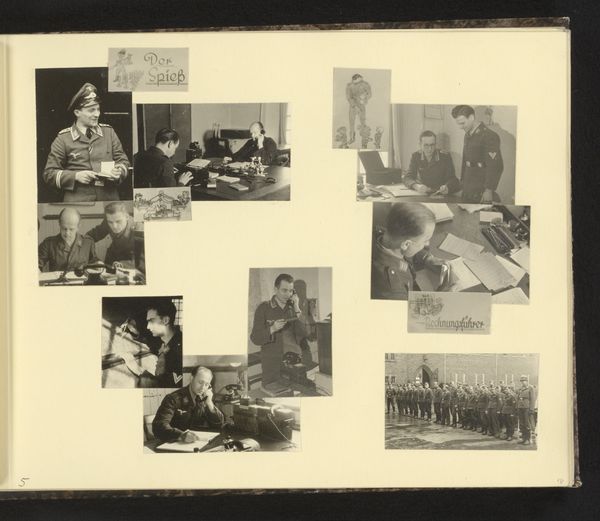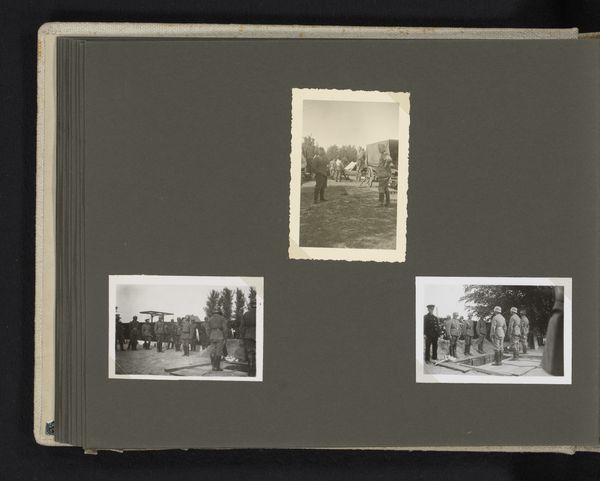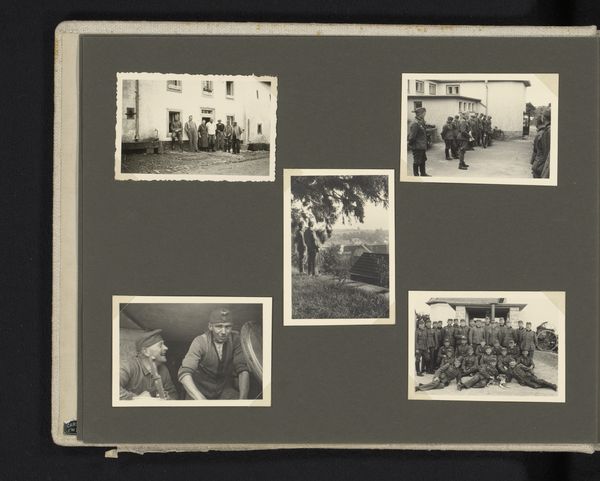
mixed-media, collage, photography, gelatin-silver-print
#
portrait
#
mixed-media
#
collage
#
landscape
#
photography
#
group-portraits
#
gelatin-silver-print
#
history-painting
#
mixed media
#
modernism
Dimensions: height 90 mm, width 60 mm, height 195 mm, width 292 mm
Copyright: Rijks Museum: Open Domain
Editor: This mixed media collage, "Boerderij en uitkijk van een bunker," dating from 1940 to 1944, seems to compile photographs in a scrapbook layout. The images themselves, gelatin-silver prints, offer glimpses into wartime life. The composition is quite striking, jumping between rural landscapes and military personnel. What narrative do you think this album page tells? Curator: It’s less about a specific narrative and more about the juxtaposition of different realities during wartime. Consider the cultural context: The Netherlands were occupied during those years. We have, on one hand, images suggesting the continuation of normal rural life: a farm, a man carrying buckets, perhaps conveying a sense of resilience or denial. But these are interwoven with photographs representing the occupying force— soldiers and bunkers – and hint at what kind of 'order' these powers hope to create and impose. Editor: So, the juxtaposition highlights the tension between the imposed order and the disrupted everyday lives? Is there a commentary embedded in that, perhaps? Curator: Precisely! Think about the choices made in compiling this page. Whose perspective do these photos represent? Someone connected to the resistance? A collaborator? Or simply a documentarian of daily life? How did this image potentially function as a kind of personal, hidden archive in those times? Editor: That’s fascinating. It's easy to see just the images, but understanding the historical context really unlocks so many possibilities about the artist's intentions, and even how the album itself could be a form of resistance or documentation. Curator: Yes, it’s a powerful reminder that art, even in the form of a humble photo album, can become a contested site of meaning, reflecting social and political realities of the time. Editor: I see it so differently now. Thanks for drawing out those layers of historical and social context. Curator: My pleasure! That's why understanding the public role of art is so crucial to our understanding.
Comments
No comments
Be the first to comment and join the conversation on the ultimate creative platform.
